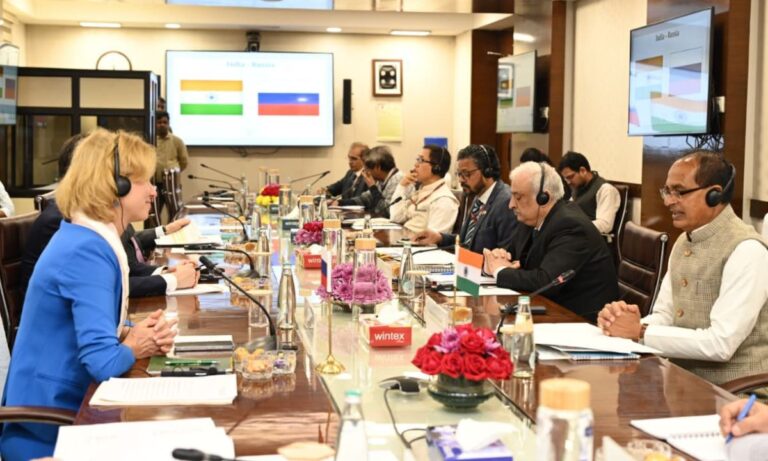
Chandrayaan-3 Mission: Budget to Landing Date; All About ISRO's 3rd Moon Mission (Image Courtesy: ISRO)
The highly anticipated moon mission Chandrayaan-3 by the Indian Space Research Organisation (ISRO) is ready for launch. After a four-year hiatus, the Chandrayaan-3 mission will take off on Friday, July 14, 2023, from the Satish Dhawan Space Centre in Sriharikota, Andhra Pradesh.
Serving as a successor to Chandrayaan-2, which encountered difficulties with its onboard computer and propulsion system during a soft landing attempt and ultimately crashed on the moon’s surface, Chandrayaan-3 will be propelled by the ‘Fat boy’ LVM3-M4 rocket.
About ISRO’s Chandrayaan Mission:
India has successfully conducted two lunar missions in the past. The first mission, Chandrayaan-1, was launched on October 22, 2008, and gained recognition for its significant discovery of water on the moon. This mission also paved the way for numerous subsequent discoveries. The second mission, Chandrayaan-2, was launched on July 22, 2019. Although the lander reached the lunar orbit, it unfortunately encountered an issue and was lost when it was merely 2.1 km away from the moon’s surface.
Now, with the knowledge and insights gained from previous endeavors, India has developed Chandrayaan-3. The Indian Space Research Organisation (ISRO) is optimistic that this new lunar mission will achieve success.

Chandrayaan -3 Budget
The third space mission aimed at lunar exploration has been successfully conducted by ISRO, with an approximate cost of Rs 615 crore for Chandrayaan-3.
Chandrayaan-3 Mission Main Objectives:
Chandrayaan 3 has a primary goal of achieving a gentle landing on the moon’s surface in order to conduct chemical analysis and discover new technologies necessary for future planetary missions.
Chandrayaan-3 Mission Spacecraft details
The spacecraft, consisting of a robotic moon lander and rover duo, will be transported by ISRO’s three-stage rocket, the Launch Vehicle Mark-3 (LVM3), to an Earth parking orbit. This orbit allows the mission team to ensure the proper functioning of all instruments after launch. Subsequently, the spacecraft will be directed towards a lunar transfer trajectory, commencing its journey through deep space.
Chandrayaan-3 Lander & Rover Name
ISRO intends to keep the names of the Chandrayaan-2 lander and rover for the Chandrayaan-3 mission. The spacecraft includes a moon lander named Vikram (meaning “Valor” in Sanskrit). Vikram is equipped with four instruments to measure thermal conductivity, detect moonquakes near the landing site, and collect other relevant data.

Upon touchdown, the rover named Pragyan (meaning “Wisdom” in Sanskrit) will detach from Vikram and explore the surrounding region. Equipped with onboard cameras, Pragyan will navigate around lunar obstacles while remaining within the lander’s field of view. It will conduct on-site experiments using two instruments, aiming to obtain valuable technical information about the moon’s composition near the landing site.
Chandrayaan-3 Lander and Rover Details
As per NASA, the lander is scheduled to make contact with the lunar surface alongside the rover in the South polar region. Following the successful landing, the lander will spend 14 Earth days (equivalent to one Lunar Day) gathering surface materials.
- Chandrayaan 3 Mission Propulsion Module: 2148 Kg
- Lander Module: 1752 Kg including Rover of 26 Kg
- Chandrayaan 3 total weight: 3900 Kg

Chandrayaan 3 Landing Date
According to ISRO Chairman S Somanath, Chandrayaan-3 is anticipated to achieve a gentle touchdown on the Moon around August 23 or 24. However, the actual date might be influenced by the lunar sunrise. In the event of any delay, ISRO will consider rescheduling the landing for September.
Chandrayaan 3 Mission Launch Live: How to Watch Online:
The vehicle assembly electrical tests for the LVM3-M4 and Chandrayaan-3 spacecraft have concluded. Those interested in witnessing the live launch from the Launch View Gallery at Satish Dhawan Space Centre can register at ivg.shar.gov.in.






